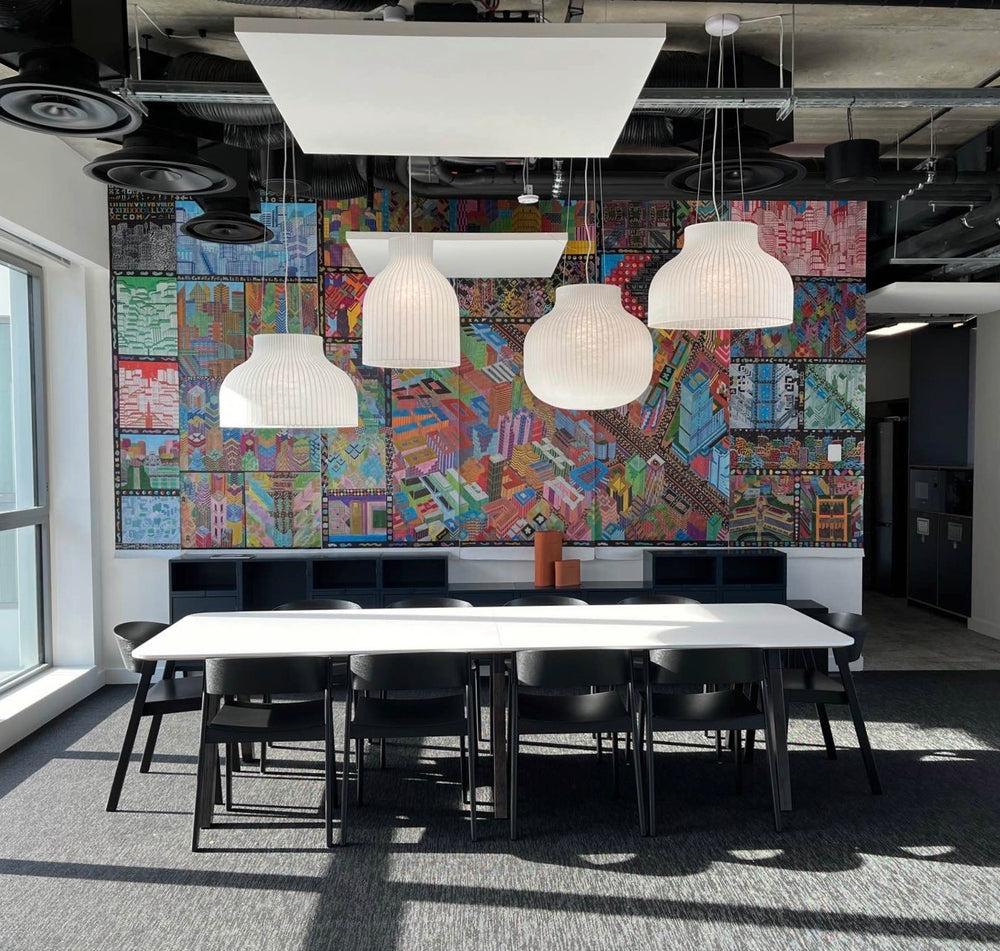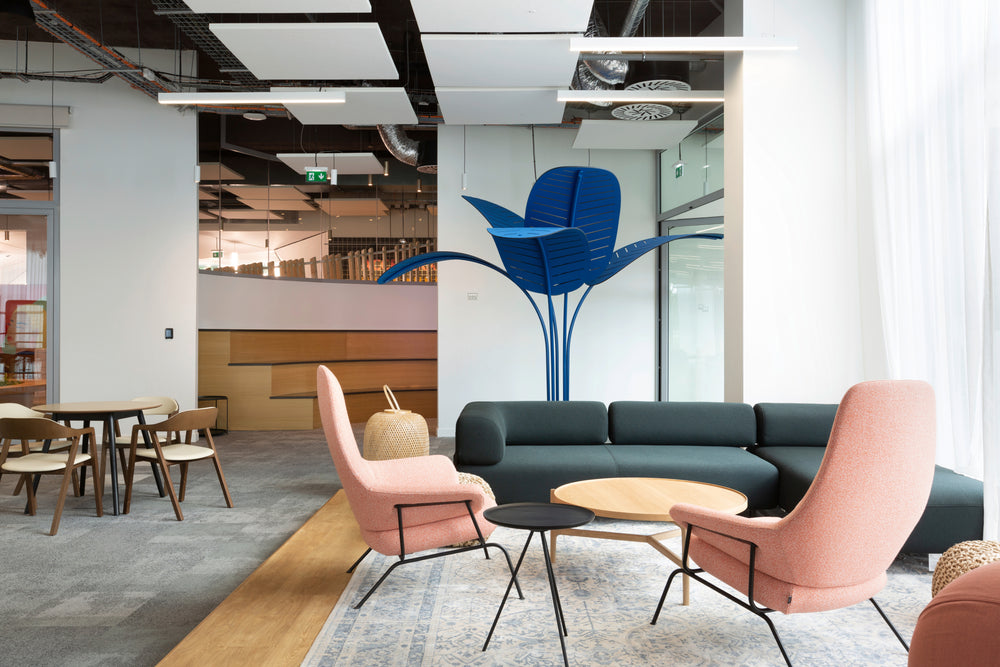Coworking arouses as much interest as remote work despite the great propulsion of the latter. However, if the exchange comes naturally with online tools, it is not always so simple in workspaces where the furniture and layout of offices tend to hinder the smooth running of communication, as a consequence, collaborative work.
In an era where professional practices evolve at the same pace as team management, it is clear that setting up a collaborative workspace is the best possible solution. It is a project that goes through many stages, starting with the assessment of the needs of your company, but especially of your employees. It is not at all, the process changes from one company to another in the sense that the available resources are not necessarily the same, as well as the materials necessary for each activity. In this article, you will discover the right ingredients for success.
Questioning the needs of the company upstream
According to a study conducted by Ubiq in 2021, the number of coworking places in France reached 2,787. A figure that includes third places, open space, cafes and offices. It's only natural that you want to join the ranks by turning your premises into one of these platforms. It is however an initiative to think about for a long time, because not only does it require a substantial budget, but the rendering could also not correspond to the expected results for lack of a good analysis upstream.

By definition, a collaborative space is a place that promotes team cohesion by bringing employees to come together side by side to achieve a single common goal. This is the reason why the definition of the missions and purposes to be accomplished through this modernization is the first step in any development plan.
- Would the main objective be to improve business results by boosting team productivity?
- Is it rather to facilitate interactions and the exchange of information and knowledge?
- Do you want to offer a better atmosphere in order to consolidate the bond which unites you to your collaborators, but also that which welds them together?
- Does the company need dedicated rooms for private meetings?
These are questioning ideas that should promote the well-being of employees, the performance of the organization as well as the brand image. Often neglected in favor of collaboration, the privacy of each individual should however be considered at the highest point when setting up the open space. Between this desire to blend in with the crowd, employees are looking for a private corner that simply promotes comfort, freedom and confidentiality. The idea is then to combine the expectations of employees with the needs of the company.
Steps to creating a collaborative workplace
Once the company's intentions have been clarified, it is time for the development stages of the collaborative workspace, which begins with the study of the available areas. This should result in valuing each area for a specific purpose. You'll soon realize that you were better off getting your goals in order beforehand. The thing is, it's at this stage that you envision the environment to be created while also thinking about how effective it will be in practice. Common tools and mixed areas must be installed near the workstations of those concerned. Their access must be simplified as much as possible and their layout, personality according to the uses. The meeting areas that have a very positive impact on the atmosphere at work can be diversified as much as possible in order to go distractions and exchanges.
It is from there that the new elements intervene and find their place. Previously unexploited places will gain in importance as old structures will have to be eliminated. You will call on different service providers during this transformation, including furniture (tables, chairs, storage, etc.) and office suppliers, as well as architects-decorators who play an important role in this second stage. Modular offices, for example, stand out as an option par excellence for quickly moving from one environment to another depending on the circumstances.
It's even better if the employees in the departments concerned, who are normally at the heart of the project, participate in setting up this adventure. You can take inspiration from their ideas for the choice of furniture and decoration: color palette, furniture design, manufacturing materials, accessories...
The imperatives of a favorable coworking space
Here's what you need to bring together to achieve a successful collaborative workspace layout.
Competent teams
As mentioned above, the services of qualified service providers are essential for research and surveys of teams and employees. They will seek to optimize this big change by referring to real life in the workplace. They take into consideration their way of occupying each zone, their workforce, their respective role in the companies, the activities carried out, the technological level of the current environment. All of this will allow them to propose areas for improvement in order, precisely, to emphasize much better collaboration.
Adapted equipment
The motivation of coworkers is a priority in the development of a collaborative workspace. To help them feel valued, you will choose the equipment according to their profile and their center of interest. After all, offices are supposed to be a real place to live because we spend most of our days there. It is quite normal that there must be elements conducive to relaxation in addition to the work materials themselves as well as the solutions related to digitalization. Apart from computer resources, offices, ancillary furniture, think of the break room, the cafeteria corner, the green space or the games room and related equipment:
- Armchair
- Couch
- Table
- Acoustic cabin
- Screens

Whether for entertainment rooms or workplaces, the cam is king to avoid one of the disadvantages of open space. This is why emphasis is placed on soundproofing systems that limit the propagation of both internal and external noise.
4 possible variations for the development of a collaborative workspace
These suggestions will give you a typical idea for the best layout of your premises.
The flex office for maximum flexibility
The flex office highlights collaboration thanks to its open parts and furniture that promotes participation and freedom of movement. In addition, the acoustic furniture is judicious in this type of configuration where the exchanges fuse and the hubbub of the conversations quickly becomes intrusive.
The cabin for more discretion
Popular for meetings, the acoustic booth focuses on confidentiality and concentration. Thanks to a varied reception capacity, it does not put the collaborative aspect in the background. Only, it is a true variant of limited coworking.
The agora, a relaxed workspace
The agora concept promotes diversification through modular furniture that can be adjusted as desired. It then takes on an informal, stylish and customizable appearance. All this makes him a good place to get ideas flowing.
The lounge, a call to relax
The lounge office is reminiscent of restaurants and bars with their cozy decor and choice of furniture. Encouraging access to entertainment, it is the very definition of a relaxing environment, without neglecting reflection. Its informal nature breaks down possible roadblocks within the group.





